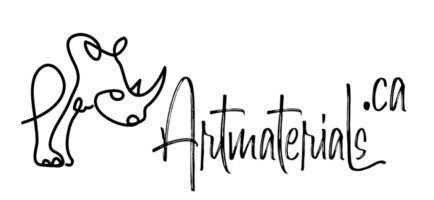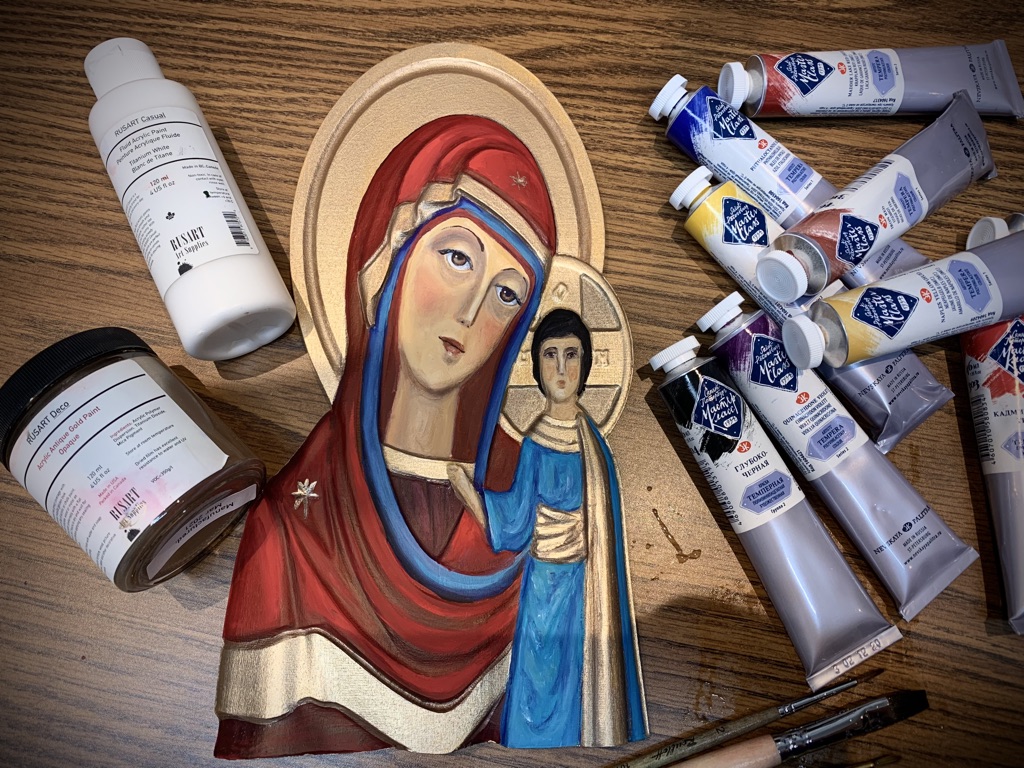Generally speaking, tempera is not just one kind of paints. “Tempera” is a term that describes many paints with pigments dispersed in an emulsion miscible with water. So, technically, acrylic, watercolours, gouache, PVAc paints are kinds of temperas. However, for some reason we use word “tempera” only for a certain kinds of paints.
Polyvinyl Acetate, or PVAc paints, actually, are ancestors of well-known and widely used in North America acrylic paints. “Ancestors” doesn’t mean that acrylic paints are better than PVAc tempera. But due to many factors tempera was replaced with acrylics.
PVAc paints vs. acrylic paints
- As any other kind of paints, PVAc tempera contains pigment powder and binder. Paints may and do contain other ingredients, such as fillers, additives, preservatives, colour enhancers etc., but let’s omit these components as they do not ermine the key characteristics of paints. As you can guess, tempera has polyvinyl acetate as a binder, while acrylic paints have acrylic dispersion, emulsion or resins inside.
- PVAc tempera usually much lower in VOC than acrylic.
- Normally, PVAc tempera has no ammonia vs. acrylic, where ammonia is used to increase adhesion and performance.
- Acrylic can be either opaque or transparent, while tempera is normally all opaque.
- They both can use water as a thinner
- Tempera works best of all on wood. Historically, egg-tempera was used in Olden Russia in painting icons. Of course, pigment blended with egg-yolk has a very short shelf life that makes it impossible in mass-production. PVAc tempera has the closest properties to original egg tempera. Check legendary Russian iconographer Andrey Rublev.
- Drying time for both acrylic and PVAc tempera is similar.
- They both change colour after drying, when water evaporates.
- Acrylic can dry matte, or gloss, or something in between. PVAc tempera is always matte.
- Although both acrylic and PVAc tempera form permanent film, acrylic has better permanence compared to tempera.
- Tempera’s binder goes inside the support leaving pigment “glued” to a surface. Acrylic paints form a film. That’s why sometimes acrylic is peeling off.
- Acrylic paints have much broader use: from canvas and paper to fabric and glass. Tempera’s use is quite limited (see below).
- Both PVAc and acrylic paints form stable and water-resistant film after drying. However tempera is more vulnerable to moist and freezing temperatures, hence, do not use tempera for exterior art projects and finishing.
How to use PVAc tempera paints?
Use it as any other opaque water-based paint. Tempera works very well on any fibre or porous support, such as:
- paper
- cardboard
- wood
- canvas
- drywall
- plaster
- plywood etc.
To thin just add some water. You can also use white glue as a medium. However, as white glue is actually white when wet and transparent once dry, it may be challenging to mix colours at first.
Once dries, tempera paints form permanent and water-resistant film. When watered-down, tempera gives beautiful washes just with water with endless possibilities for glazing techniques.
Full drying time depends on amount of water used, but is very similar to acrylic paints. While you paint, your work may look glossy because of the water used. But as soon as tempera dries the surface is absolutely matte.
For your creative projects feel free to add some acrylic or oil layers on top of tempera. After full drying, of course.
Cover your finished works with acrylic or oil-based varnish, but give them at least 48 hours before applying any finishing.
Check our selection of Professional PVAc Tempera Paints >>



























